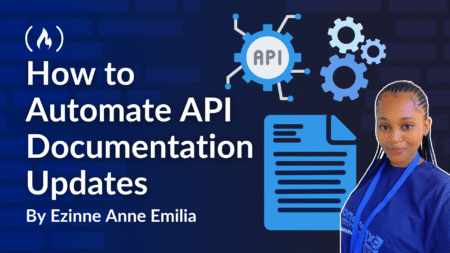
Artificial Intelligence (AI) adoption in India is gaining ground, although at a measured pace. A new report released as part of Lenovo’s “CIO Playbook 2025: It’s Time for AI-nomics” suggests that organizational maturity and readiness remain uneven while the country embraces AI with increased spending. Based on a global IDC study surveying over 2,900 respondents—including 900+ from 12 Asia Pacific (AP) markets—the findings offer an outline of where Indian enterprises stand on the AI curve, what’s accelerating change, and where gaps persist.
The study highlights a sharp pivot toward next-gen tools, with Generative AI poised to consume 43% of India’s total AI spend by 2025, emphasizing a major shift in enterprise priorities.
Spending Grows, but ROI Holds Back Scale
India is expected to increase its AI investments by 2.7 times by next year, slightly trailing the Asia Pacific average of 3.3x. However, a closer look reveals that many organizations are still in the early phases of their AI journey. Nearly 49% of Indian businesses are either evaluating AI technologies or planning implementation within the next 12 months.
The key barrier? Return on Investment (ROI).
Unlike short-term technology deployments, AI requires a sustained strategy balancing experimental use cases with scalable, measurable outcomes. With an expected 3.6x return on AI investments, organizations are under pressure to prove value while navigating hurdles such as data quality, talent shortages, and infrastructure limitations.

GRC Takes Center Stage—But Implementation is Lagging
Perhaps the most significant strategic shift highlighted by the report is the rise of Governance, Risk, and Compliance (GRC) as a top CIO priority across AP. GRC jumped 12 spots to become the #1 focus area for IT leaders—underscoring growing concerns around the ethical and responsible use of AI.
In India, however, the pace of GRC implementation remains slow. Only 19% of CIOs report having fully enforced AI governance policies. That’s well below what’s needed, especially in a landscape increasingly shaped by regulatory scrutiny, data privacy concerns, and AI bias.
GRC in the context of AI includes frameworks for explainability, model transparency, privacy protection, and human oversight—capabilities that are still underdeveloped in many Indian enterprises.
Where AI is Making an Impact: Use Cases Vary by Region
The practical application of AI continues to evolve across industries, with regional nuances. Across Asia Pacific, IT operations emerged as the leading AI use case. But in India, sales took the top spot, followed by marketing and software development.
This suggests a customer-centric approach in Indian businesses, where AI is increasingly used to enhance personalization, campaign performance, and product delivery. These domains are ripe for GenAI-driven applications such as content generation, predictive analytics, and customer behavior modeling.
Elsewhere in AP, cybersecurity continues to be a major area of focus, as organizations look to AI for threat detection, vulnerability analysis, and incident response automation.
Hybrid and On-Prem Infrastructures Gain Favor
Despite the rapid cloudification of enterprise workloads, on-premise and hybrid architectures remain the dominant choices for AI workloads in AP. The study finds that 65% of organizations in Asia Pacific—and 63% in India—favor these models over public cloud solutions.
The reasons are clear: low latency, better data control, and regulatory compliance are driving these preferences, especially for industries like finance, healthcare, and critical infrastructure.
As AI workloads become more data-intensive and time-sensitive, infrastructure decisions are increasingly strategic.
AI-Powered PCs and Productivity: Still in the Early Stages
While AI is reshaping backend systems and enterprise platforms, the front-end revolution is also underway. AI PCs—which integrate AI accelerators and intelligent features for productivity—are beginning to make their mark.
According to the report, 43% of AP organizations are already observing productivity gains through AI-powered PCs. In India, over half of the surveyed businesses are actively planning to adopt such devices. While deployment is still nascent, expectations are rising—especially in hybrid work scenarios where intelligent devices can automate mundane tasks and enhance collaboration.
The Skills Gap: Partnerships Becoming Critical
A recurring theme across the study is the lack of internal AI capabilities. To address this, 29% of Indian CIOs say they’re already leveraging professional AI services, while another 54% are planning to.
These partnerships are crucial for navigating the complexity of AI solution design, integration, and impact measurement. They also enable internal teams to focus on strategic implementation while external experts handle the heavy lifting on infrastructure, modeling, and deployment.
The report hints at a shift toward outcome-led AI adoption—where organizations prioritize business impact over experimentation. This includes targeted pilots, ROI tracking, and faster scaling through modular, proven frameworks.
GenAI: Fueling the Next Wave of AI Investment
Generative AI, the driving force behind much of the AI buzz in the past year, continues to shape enterprise strategies. IDC notes that investment in GenAI is rising, even at the expense of interpretative AI tools. Predictive AI remains steady, while hybrid approaches—combining GenAI with traditional models—are gaining traction.
In India and AP, GenAI is increasingly used in:
- Code generation and DevOps optimization
- MLOps platforms for automating model lifecycles
- Content creation in marketing and communications
- Knowledge management in customer support and training
These functions offer immediate ROI, thanks to large datasets and existing workflows that are easy to augment. However, as the technology matures, enterprises are likely to move beyond these low-hanging fruits to more complex use cases.
Building the Foundation: Data, Skills, and Governance
The report concludes with a clear takeaway: “go slow to go fast.” For AI to succeed, organizations must first invest in foundational capabilities:
- High-quality data pipelines
- Scalable infrastructure
- Upskilling programs in data science and AI
- Robust governance and compliance frameworks
A significant 34% of AP organizations plan to improve their data management capabilities in the next year, reflecting this realization. Data governance and science were ranked among the top three investment areas, driven by the lessons learned during rushed GenAI deployments where poor data quality limited success.
Toward Smarter, Sustainable AI
India’s AI journey is clearly gathering pace. But the message from Lenovo’s CIO Playbook is unmistakable: strategic discipline matters. While GenAI continues to captivate the market, real value will come from responsible innovation, measured scaling, and building a future-ready AI foundation that combines governance with growth.
With new regulations, rising customer expectations, and evolving technologies, India’s enterprises are entering a critical phase. The next year will likely determine not just how much they spend on AI—but how smartly they use it.
Source: Read More

